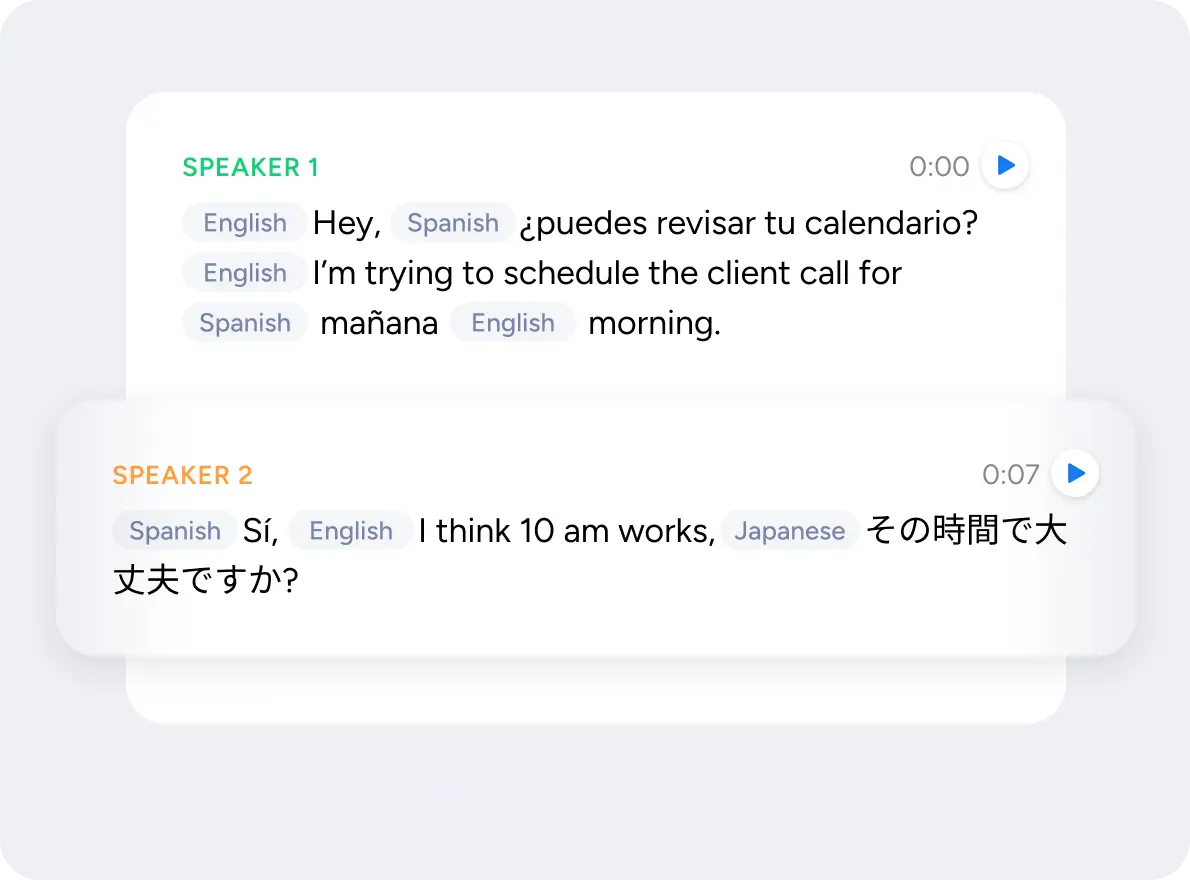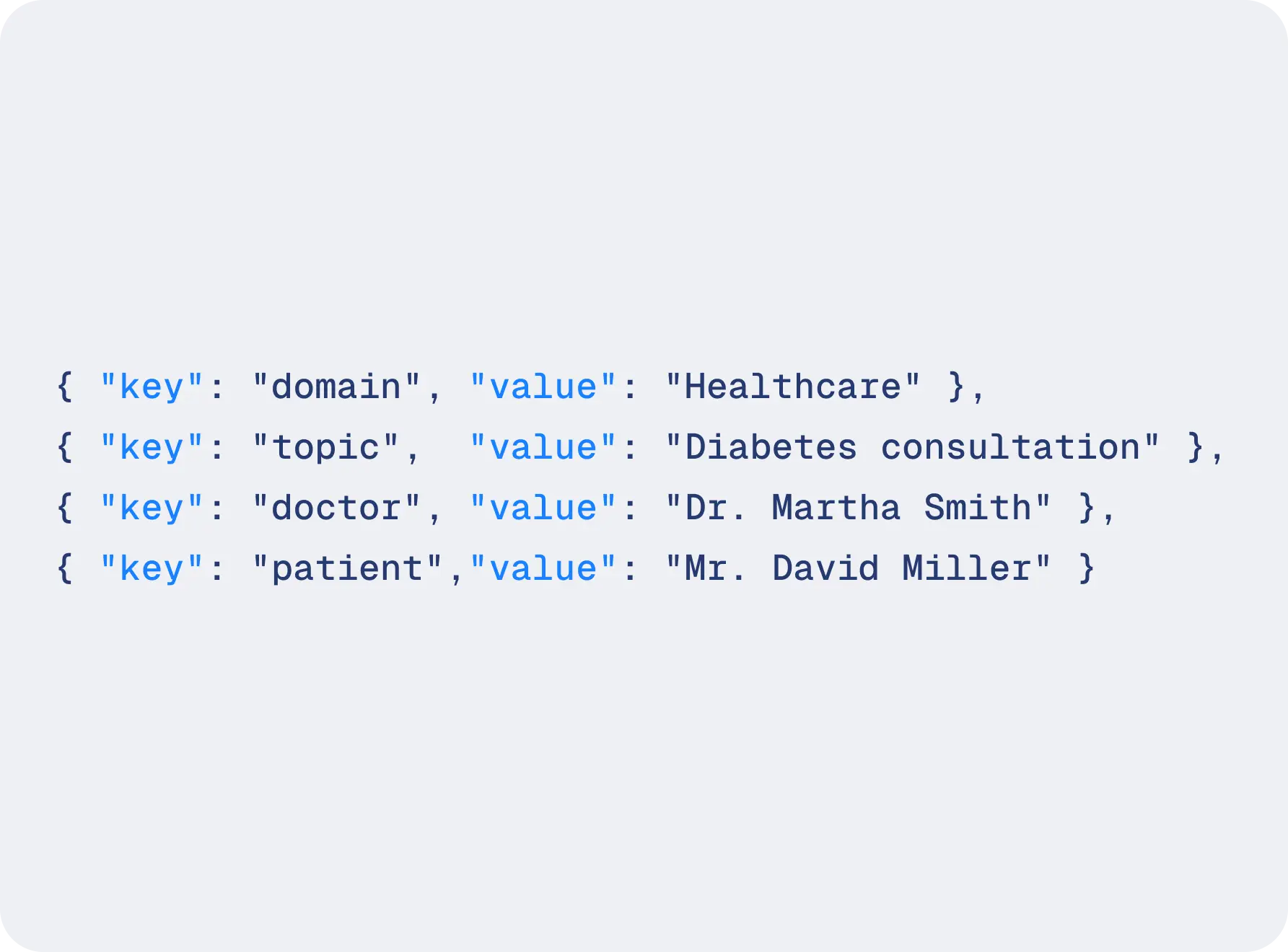Soniox vs AssemblyAI speech-to-text
Higher accuracy, real-time fluency, and global reach at lower cost.
Developers choose Soniox for global-ready, real-time fluency
AssemblyAI is known for simple APIs, but for speech itself Soniox outperforms, delivering higher accuracy, true real-time streaming, and global coverage in one API.
With Soniox, you can build one app that works for 8 billion people across 60+ languages. Soniox consistently delivers world-class accuracy, faster real-time streaming, speaker detection, and true multilingual coverage.
Cleaner transcripts, zero mistakes
Benchmarks show Soniox at 6.5% WER in English vs 11.1% for AssemblyAI. Less cleanup, more trust.
One API for 60+ languages
Transcription and translation built in, so your app works worldwide without chaining APIs.
Streaming that feels instant
Token-level results in milliseconds make apps fast, fluid, and human — not robotic.
Helping startups and enterprises ship real world voice apps



See the difference for yourself
Don't just take our word for it. Run the same audio through Soniox and AssemblyAI in real-time and compare live results, side by side.
This demo isn't pre-recorded. It makes real API calls to AssemblyAI and Soniox in real-time, with each service tuned for its best performance. The framework is open source, so you can inspect or run it yourself.
SONIOX VS ASSEMBLYAI AT A GLANCE
The benchmarks back it up
In a 2025 study across 60 languages and real-world YouTube audio, Soniox reached 6.5% WER in English vs 11.1% for AssemblyAI.
View the full benchmark report| Feature | Sonioxstt-rt-v3 | AssemblyAIUniversal |
|---|---|---|
| open_in_newSingle Multilingual Model | check | close* |
| open_in_newLanguage Hints | check | close |
| open_in_newLanguage Identification | check | close |
| open_in_newSpeaker Diarization | check | close* |
| open_in_newCustomization | check | close* |
| open_in_newTimestamps | check | check |
| open_in_newConfidence Scores | check | check |
| open_in_newTranslation One Way | check | close |
| open_in_newTranslation Two Way | check | close |
| open_in_newEndpoint Detection | check | check |
| open_in_newManual Finalization | check | check |
| open_in_newSovereign Cloud | check | warning* |
Pay up to 3x less than AssemblyAI
With Soniox, transcription, streaming, translation, diarization, timestamps, and confidence are all included in one price. AssemblyAI charges more for their flagship Universal models, while their lower-cost Nano models come with tradeoffs in accuracy.
Effective hourly cost
(typical speech)
Soniox
~$0.10/hour (async)
~$0.12/hour (streaming)
AssemblyAI
~$0.27 (universal async), ~$0.15/hr (streaming), ~$0.12/hr (nano async)
Takeaway
Soniox costs up to 3x less than AssemblyAI, while including translation and richer real-time features out of the box. AssemblyAI's cheaper models cut accuracy, while Soniox includes full accuracy and features at one flat rate.
- Soniox bills per token, which works out to the effective hourly rates above for typical conversational speech.
- AssemblyAI pricing varies by model. Nano is cheaper but sacrifices accuracy; Universal is higher accuracy but more expensive.
- All comparisons use publicly listed rates as of 2025.
Why teams choose Soniox over AssemblyAI
Understand every word, in every language.
"It just gets the words right — any language, any accent, any context. That’s what accuracy is supposed to look like."
Tony Wang,
Cofounder & Chief Revenue Officer at Agora


Real-time that doesn’t cut corners.
"It’s so fast, captions appear before people even finish talking. Zero lag. No buffering. Nothing."
Dag-Inge Aas,
Head of AI at Tana
Designed for messy, multilingual conversations.
"Soniox knows who’s speaking and when each thought ends. The real-time transcripts read like true dialogue, not data dumps."
Adam Strom,
Co-Founder & President at Mobius MD


Built-in domain intelligence.
"Soniox's ability to accurately transcribe complex medical terminology means our physician-customers spend significantly less time editing. This allows them to finalize their notes faster and focus on what matters most: patient care."
Max Malyk,
Vice President at DeliverHealth
Global-ready from the start.


Global compliance. Local performance.
Fluent at any speed
Watch Soniox keep up with fast speech in any language
Frequently asked questions about Soniox vs AssemblyAI
1.How accurate is AssemblyAI compared to Soniox?arrow_downward
2.Does AssemblyAI support translation?arrow_downward
3.How fast is AssemblyAI's streaming?arrow_downward
4.What about multilingual or messy audio?arrow_downward
5.How does AssemblyAI pricing compare to Soniox?arrow_downward
6.Why is Soniox more cost-efficient?arrow_downward
Soniox surpasses AssemblyAI in any language
Get the most accurate, real-time speech-to-text transcription and translation in 60+ languages
Build faster with one API
Explore the docs
Find guides, API reference, and code samples to help you build fast.
docs_add_onView docs







